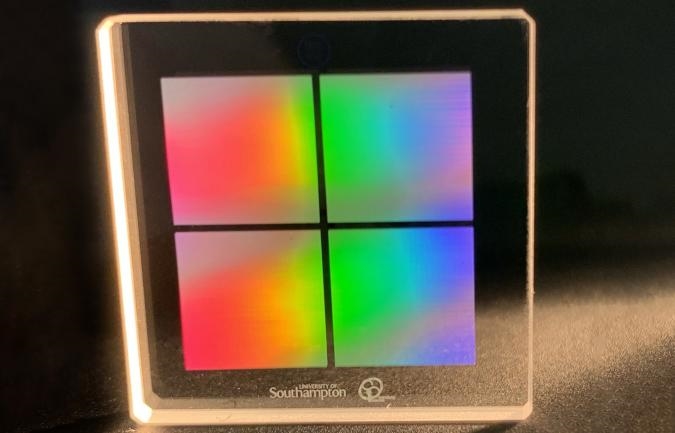‘5D’ storage could fit 500TB on a CD-sized glass disc
That would be 10,000 times more data than Blu-ray discs.


Using high-speed lasers, researchers have created “5D” data storage technology that could allow 500 TB of data to be written to a CD-sized glass disc, according to the Optica society. The technique uses higher writing speeds that might finally make it feasible to use the technology for archival and other purposes.
With 5D optical storage, each file is uses three layers of nanoscale dots. The dots’ size, orientation and position within the three standard dimensions, make up the five “dimensions.” The dots change the polarization of light travelling through the disc which is read using a microscope and polarizer.
We’ve seen 5D optical storage before, but there were a number of problems — particularly the slow writing speeds that made the technology impractical. It has huge upsides for (extremely) long-term storage, though. It’s been estimated that the storage medium could withstand temperatures up to 1,000 degrees C and last 13.8 billion years at room temperature without degrading.
To overcome the speed problem, researchers used a femtosecond laser with a high repetition rate. Rather than writing directly in the glass, they used the laser to produce a phenomenon called near-field enhancement, that creates tiny structures using a few weak light pulses. Those can be used to enhance the circular voids generated by a more powerful, single-pulse “micro-explosion.” This technique “minimized the thermal damage that has been problematic for other approaches that use high-repetition-rate lasers,” according to the paper.
Using the new technique, the team was able to write 5GB of text data ono a silica glass disc the size of a conventional CD with nearly 100 percent readout accuracy. “With the writing density available from the method, the disc would be able to hold 500 terabytes of data,” the researchers said. They were also able to write at speeds or around a million voxels per second, or about 230 KB per second.
That might sound slow, but by introducing parallel writing, you could feasibly fill a 500TB disc in about 60 days. That could provide a way to backup reams of valuable data, essentially forever. “With the current system, we have the ability to preserve terabytes of data, which could be used, for example, to preserve information from a person’s DNA,” said research team leader Peter G. Kazansky.
(72)